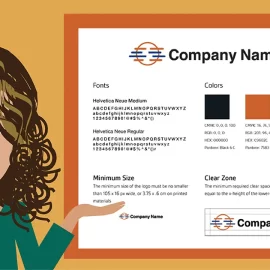
A Brief History of Icons and Pictograms
Icons and pictograms have been used since the beginning of history in every stage of the evolution of the many forms of human communication, from the use of visual signs and figures to convey the meaning of concepts, words and sounds, to the development of spoken language to writing.
As a communication form, pictograms have maintained their varied functions, which have now become more useful as the demand for quick communication has grown.
This article will focus on the fact that we have entered an era of more pictograph-based communication.
What do we mean when we say pictograms
A pictogram or pictograph is a sign that represents a symbol, a real object or a figure in a schematic way. With this term, we identify written symbols that belong to logo-graphic writing systems, which were originally based on ideograms.
This kind of signs is created in order to draw attention to something using images instead of language or words. Those images must be quickly and clearly recognised and understood. As we are coming out of an era based mostly on written culture, we are now entering into a new environment, dominated by audio and visual experiences: the traditional rules of communication are changing.
Pictograms become a useful tool when a message needs to be transmitted and understood independently of words, writing, language and culture. It’s important to know that pictograms can’t be instinctively learned and understood by natural means. It depends on an agreement between the sender and the receiver.
Nowadays, pictograms are used as pictorial symbols, whose objective is to report and inform A practical example could be diagrams that represents statistical data by pictorial forms. Because of their many applications, pictographs are widely used in our daily life to transmit information by using graphics.
A brief history of pictograms
Even if pictograms are a modern invention, the first written symbols are considered as pictorial representations of objects. In fact, the use of this pictorial signs has expanded throughout the course of human history.
Nowadays, pictograms are used in all sorts of environments, from road signage to laundry instructions, in instructional graphics and modern technologies.
It’s interesting to notice that many of the common pictographs transcend cultures to become international symbols. In fact, the international standard ISO 7001 (International Standardisation Organisation) defined the DOT pictogram set in the seventies already.
The main difference between other visual representations and pictographs is that they are intended to be a standard, completely independent of their context. Companies like Toyota and Phillips were the early adopters of pictographs. They came into general use around the seventies. But, to trace a comprehensive line of time for pictographic symbols, we should go back to prehistoric rock paintings and petroglyphs.
Pictographs were used all over the world since 9,000 BC and became popular around 4,000 years later, when they began to develop into logographic writing systems. But the first pictorial signs appeared in 30,000 BC, in the form of cave paintings.
The earliest forms of Mesopotamian language of cuneiform, the Egyptian hieroglyphs, as well as Japanese pictograms and Mayan glyphs, marked a major advancement in the development of culture as they have contributed to the idea of icons and pictograms.
In the 12th century, new categories of pictorial signs emerged, but as hieroglyphs, they were not neutral because they didn’t fulfill the criteria of international symbolism.
Three centuries later, the invention of the printing press gave birth to some pictorial signs that come close to our pictographs.
Because of all these influences, now pictographs have developed in an incredibly efficient and simple way to represent and communicate ideas because they offer a clear and concrete explanation pointing to a simple fact. Pictographs are easily recognised as every detail is removed to focus solely on the bare message. The context of pictograms plays an important role because it helps the viewer to comprehend its meaning.
What are the main differences between signs, symbols and pictograms?
Signs and symbols can be defined as semiotic entities with different properties. A sign is given by the act – from who is trying to communicate – of denomination, designation and representation.
On the other hand, a symbol is a visible representation of the reality that is commonly associated with a meaning previously accepted by society. A symbol may consist of real information that has been extracted from the environment and that is easy to recognise, or even by simple elements like forms and colours.
Signs and symbols transmit ideas. Their close relationship with visual elements and their structural simplicity provides ease of perception that is essential when it comes to communicate.
And what about icons?
In the field of information technology, icons are small pictograms used in graphical interfaces to assist users. They identify and represent an object, replacing it by its meaning or representation. Nowadays, icons can represent anything for users, as they have a wide range of applications. Some of them may be:
- In modern operating systems, applications are associated with an icon and the interaction with this element is the standard method for launching the application itself.
- Within a program, an icon can be used to represent an action.
- An icon can function as a link, so it can be used in a website to connect the user to other pages or websites.
- Websites usually have their own icon, called favicon, which generally represents the logo of the site.
SOURCE: Noupe



